Quick Summary
Python has emerged as a top choice for developers worldwide because of its adaptability and a vast selection of libraries. With an easy-to-understand yet comprehensive overview of each tool’s capabilities, let’s plunge into the details of Python libraries and web scraping tools. These tools will revolutionize your coding experience, regardless of your level of programming experience or where you are in your Python learning process.
Python’s adaptability and vast library have made it extremely popular among developers. We’ll look at some of the best Web Scraping Tools & Libraries in Python to show you how to use data to your advantage and simplify challenging tasks.
Statistics
- The Python Software market has witnessed remarkable growth in recent years, with its size reaching a valuation of US $540 Million in 2021.
- The surge is projected to continue, as the total market revenue is expected to grow at an impressive rate of 13.48% from 2022 to 2027, reaching nearly US $1.14 Billion.
Why Is Python So Popular For Web Scraping?

In the world of web scraping, Python has emerged as a dominant force, capturing the hearts of data enthusiasts and developers alike. But what makes Python so popular for web scraping?
Let’s uncover the secrets behind Python’s rise to prominence in the field and explore its advantages for data extraction projects.
Simplicity and Readability
One of Python’s most vital points is how easy it is to read and understand its syntax. Even for novices, learning is simple thanks to its clear structure. The learning curve is sped up by this simplicity, making development and debugging more efficient. Python enables you to create clear, elegant, effective, and efficient code.
Abundance of Libraries
Python boasts a vast ecosystem of libraries specifically designed for web scraping. Beautiful Soup is the most notable library in this domain, which provides a convenient way to parse HTML and XML documents. With Beautiful Soup’s intuitive API, extracting data from web pages becomes a breeze. Additionally, libraries like Requests and Selenium enhance Python’s capabilities, enabling seamless web interactions and dynamic content handling.
Abundance of Libraries
Python’s versatility allows it to adapt to various web scraping scenarios. Python lets you navigate intricate HTML structures, interact with JavaScript-driven pages, or extract data from static websites. It is the perfect option for creating end-to-end web scraping solutions due to its versatility in connecting with other tools and frameworks.
Community and Support
Python has a vibrant and supportive community of developers, contributing to its popularity in web scraping. Countless online resources, forums, and tutorials offer guidance and solutions to common challenges. This strong community support ensures you’ll always be supported in your web scraping journey and provides opportunities to learn and grow alongside fellow enthusiasts.
Community and Support
Python has a vibrant and supportive community of developers, contributing to its popularity in web scraping. Countless online resources, forums, and tutorials offer guidance and solutions to common challenges. This strong community support ensures you’ll always be supported in your web scraping journey and provides opportunities to learn and grow alongside fellow enthusiasts.
Also Read:
Best Python Web Scraping Tools and Libraries
Looking for a mobile app development company to bring your ideas to life? You can hire top dedicated developers who will create stunning and intuitive apps that meet your unique requirements. From data scraping to seamless integration, our experts will deliver top-notch solutions tailored just for you.
The process of extracting data from websites has been transformed by web scraping. Python provides a variety of alternatives for web scraping due to its robust network of modules and tools.
1. Beautiful Soup
Beautiful Soup is a powerful parsing library that extracts data from HTML and XML documents. It provides a simple and intuitive API, making navigating and searching through web page structures easy.

Features
- A powerful parsing library
- Extracts data from HTML and XML documents.
- Simple and intuitive API
- Helps in navigating and searching web page structures
Pros
- Simple and easy to use
- Can handle malformed HTML gracefully
- Excellent compatibility with different parsers
Cons
- Slow performance compared to other libraries
- Cannot handle large and complex web pages
2. Scrapy
Scrapy is a high-level web scraping framework enabling developers to build scalable and efficient projects. It provides powerful features such as automatic request scheduling, built-in support for handling cookies and sessions, and robust error handling.

Features
- A high-level web scraping framework
- Enables developers to build scalable and efficient projects
- Automatic request scheduling
- Provides built-in support for handling cookies and sessions
- Robust error handling capabilities
Pros
- Excellent performance
- Ideal for scraping large-scale websites
- Modular architecture
- Easy code reusability and maintainability
Cons
- Steeper learning curve
- Requires a deeper understanding of web scraping concepts
3. Selenium
Selenium is a powerful automation tool that can interact with web browsers programmatically. Selenium Python Web Scraping enables the scraping of dynamically generated content, such as websites built with JavaScript frameworks.

Features
- A powerful automation tool
- Interact with web browsers programmatically
- Enables scraping of dynamically generated content
- Capable of handling websites built with JavaScript frameworks
Pros
- Simulate fundamental user interactions, like clicking buttons, filling out forms, and scrolling
- Highly versatile
- Can handle complex web scraping scenarios
Cons
- Requires a web driver to interface with different browsers
- Additional maintenance layer
- Slower compared to other libraries
4. Requests-HTML
Requests-HTML is a library built on top of the popular Requests library, providing an easy-to-use interface for web scraping. It supports parsing HTML and CSS, making extracting data from web pages simple.
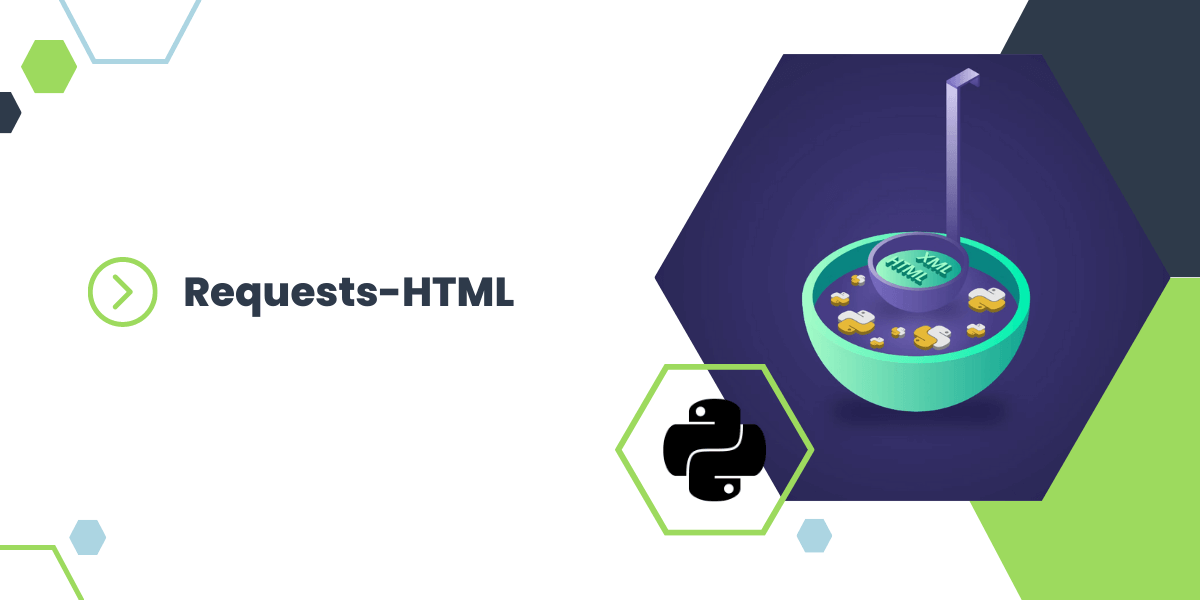
Features
- A library built on top of Requests
- Provides an easy-to-use interface for web scraping
- Supports parsing HTML and CSS
- Simplifies the process of extracting data from web pages
Pros
- Straightforward and intuitive API
- Beginner-friendly
- Automatic session management, form submission, and JavaScript rendering
Cons
- Fewer features compared to other libraries
- Cannot handle complex scraping scenarios less effectively
5. PyQuery
PyQuery is a jQuery-inspired framework that offers a syntax similar to jQuery for processing and modifying HTML texts. For developers accustomed to working with jQuery, it provides a familiar syntax and streamlines the process of retrieving data using CSS selectors.
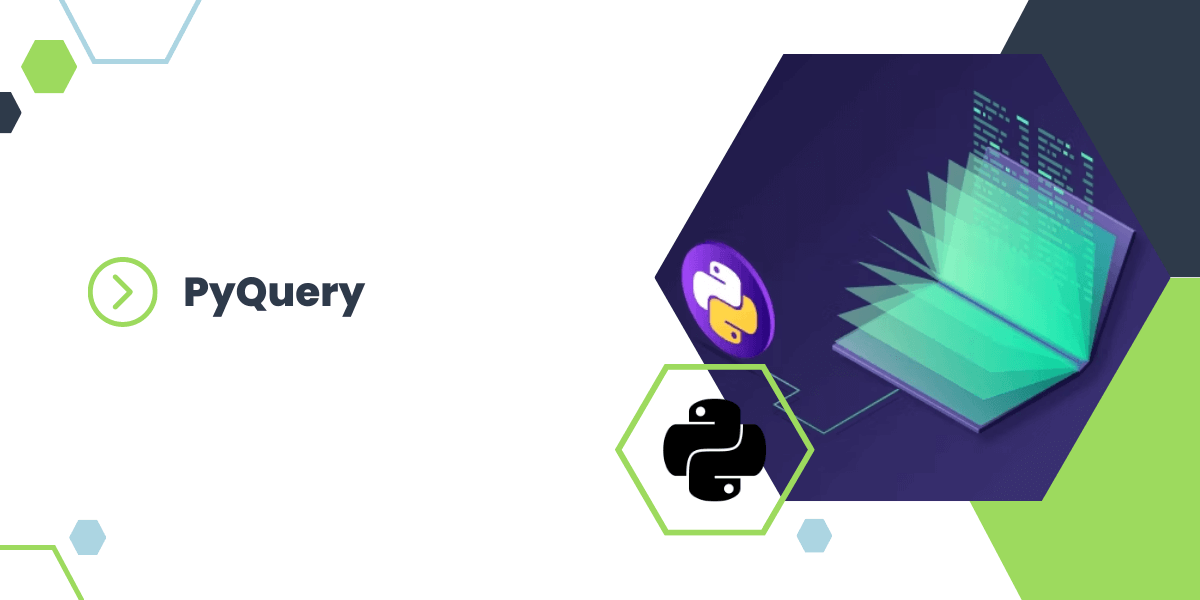
Pros
- Developers can leverage existing knowledge of jQuery for web scraping
- Concise and elegant syntax for navigating and manipulating HTML structures
Cons
- Not widely popular
- Lack of advanced features found in other tools
6. LXML
LXML is a powerful library for processing XML and HTML documents. It provides a fast and efficient way to parse and manipulate structured data. Its support for XPath and CSS selectors offers flexible data extraction options.
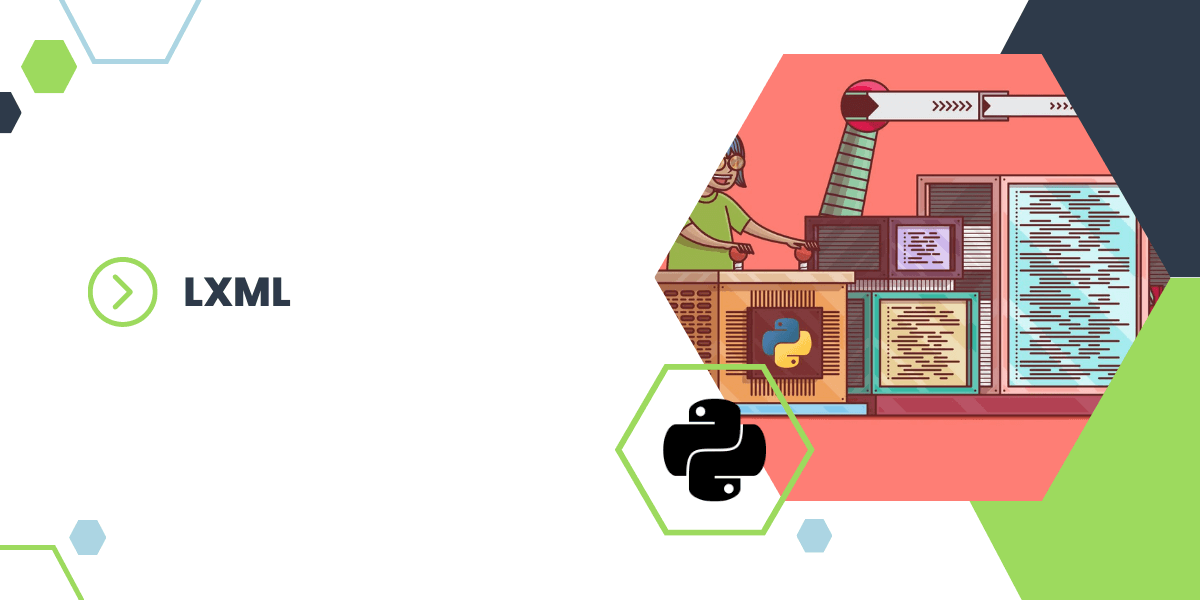
Pros
- Excellent performance
- Memory efficiency
- Several methods for traversing and manipulating XML and HTML
- Ideal for complex scraping tasks
Cons
- Steeper learning curve compared to other libraries
- Require a deeper understanding of XML and XPath concepts
| Library | Category | Popular Companies | Level of Complexity | Performance |
|---|---|---|---|---|
| Beautiful Soup | Parsing and Navigation | DataCamp, Stack Overflow, Airbnb | Beginner-friendly | Good performance for small to medium-sized websites |
| Eaze | High-level Framework | Scrapinghub, Airbnb, TripAdvisor | Moderate to advanced | Excellent performance for large-scale scraping projects |
| Selenium | Browser Automation | LinkedIn, Amazon, eBay | Moderate to advanced | Excellent for dynamic content and JavaScript rendering |
| Requests-HTML | User-Friendly Interface | Reddit, BuzzFeed, Netflix | Beginner-friendly | Good performance for most web scraping tasks |
| LXML | Efficient XML and HTML Parsing | Google, Facebook, YouTube | Advanced | Excellent performance for parsing large XML documents |
Web Scraping Prevention In Python: Best Practices
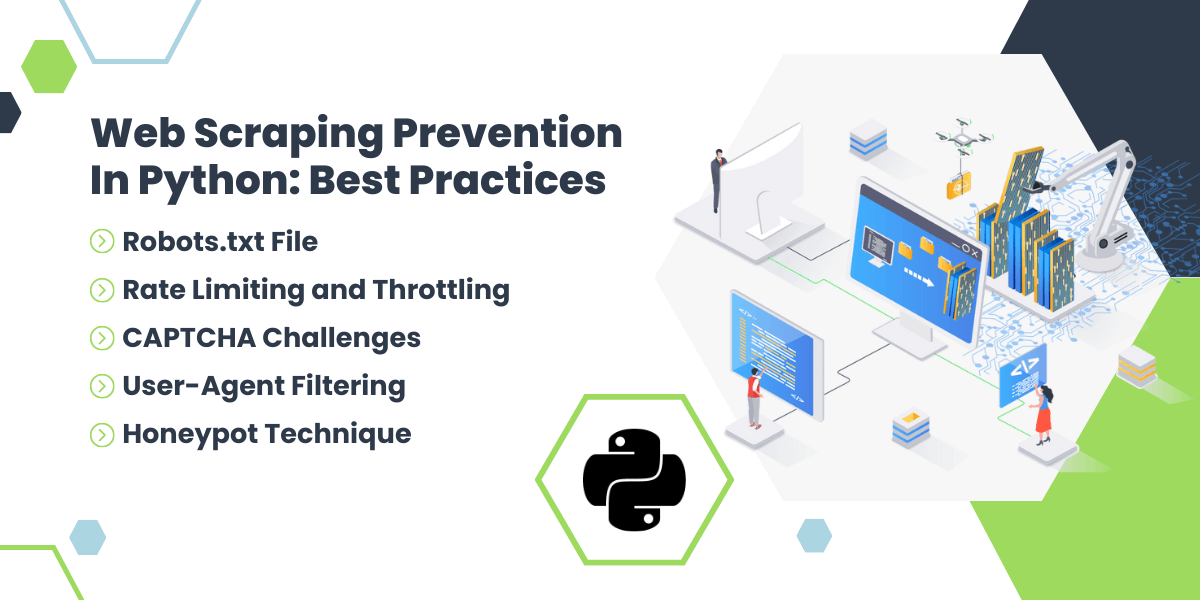
Web scraping has become a prevalent technique for extracting data from websites. Scraping the web with Python can offer various legitimate use cases; it can also be misused for unauthorized data harvesting, intellectual property theft, and malicious activities. Following these guidelines can protect your website and maintain control over your valuable information.
1. Robots.txt File
Use Case
The robots.txt file allows website owners to communicate with web crawlers and specify which pages to allow or disallow for scraping.
Best Practice
Create and maintain a robots.txt file to provide instructions to well-behaved web crawlers. Use the Disallow directive to restrict access to sensitive or private areas of your website.
Example
Check out the Google Search Console Robots.txt Tester to validate and test your robots.txt file.
2. Rate Limiting and Throttling
Use Case
Implementing rate limiting and throttling mechanisms helps control the number of requests a user or IP address can make within a given timeframe.
Best Practice
Set limits on the number of requests per minute or hour from a single IP address or user agent. This can help prevent abusive scraping and minimize the impact on server performance.
Example
Consider using Python libraries like Flask-Limiter or Django Ratelimit to implement rate limiting in your web application quickly.
3. CAPTCHA Challenges
Use Case
CAPTCHA challenges are designed to differentiate between human users and automated bots, making scraping more difficult for malicious actors.
Best Practice
Integrate CAPTCHA challenges in critical areas of your website or on pages where sensitive data is accessed. Requiring users to finish tasks for accessing the content increases security to a higher level.
Example
Consider using services like reCAPTCHA or Captcha to add CAPTCHA challenges to your web pages.
4. User-Agent Filtering
Use Case
User-Agent filtering allows you to block or restrict access based on the user-agent string sent by the client requesting your web pages.
Best Practice
Monitor user agent strings and identify suspicious or bot-like user agents. Block or restrict access to such agents to prevent scraping attempts from known scraping tools.
Example
Explore the UserAgent library in Python to parse and analyze user agent strings effectively.
5. Honeypot Technique
Use Case
The honeypot technique involves placing hidden links or form fields on web pages to trick scrapers into revealing themselves.
Best Practice
Insert hidden links or form fields invisible to human users but detectable by scraping bots. When these elements are accessed or interacted with, it indicates suspicious scraping activity.
Example
Check out the Honeypot Project for more information on implementing honeypot techniques to identify and block malicious scraping attempts.
Implementing these best practices can significantly enhance your website’s resilience against web scraping attempts. It’s crucial to balance protecting your data and ensuring a positive user experience. Regularly monitor your website’s traffic, analyze access logs, and update your preventive measures as new scraping techniques emerge.
Conclusion
Adhere to ethical guidelines, respect website policies, and use scraping tools responsibly for web scraping. Data privacy and integrity are paramount in the digital landscape. Keep exploring, experimenting, and refining your web scraping skills to unlock valuable insights and stay ahead in the data-driven world.
You can also seek professional help from a top custom app development company. Echoinnovate IT can provide you with accurate web scraping services using the best tools. Get in touch with us to hire Python developers at affordable costs.
FAQs
What Is The Purpose Of A Web Scraping Tool?
You may automatically extract data from websites using a web scraping application. It can help gather information, perform market research, track competitors, monitor prices, and more. With the right tools, you can streamline data extraction and save valuable time and resources.
Which Web Scraping Libraries Are Compatible With Python's Tech Stack?
Python’s tech stack is highly versatile, and many web scraping libraries are compatible. Some popular choices include Beautiful Soup, Scrapy, Selenium, Requests-HTML, PyQuery, and LXML. These libraries integrate well with Python and offer powerful features for web scraping tasks.
Can Python Libraries Or Tools Handle The Scraping Of Dynamic Websites That Require JavaScript Rendering?
Yes, Python libraries and tools like Selenium and Requests-HTML can handle the scraping of dynamic websites that require JavaScript rendering. They can simulate user interactions, execute JavaScript code, and retrieve dynamically generated content. This capability allows you to scrape data from websites that heavily rely on JavaScript for their functionality.
What Are The Advantages Of Using Python Libraries And Web Scraping Tools For Data Extraction?
Using Python libraries and web scraping tools for data extraction offers several advantages. These include
Flexibility: Python provides many libraries and tools, making it flexible for different scraping requirements.
Ease of Use: Many Python libraries have user-friendly APIs and syntax, making them accessible to beginners and experienced developers.
Rich Ecosystem: Python has a vibrant community and extensive documentation, ensuring excellent support and resources for web scraping tasks.
Integration: Python seamlessly integrates with other data processing and analysis tools, allowing you to incorporate web scraping into your existing workflows.
Automation: Python libraries and tools enable you to automate repetitive scraping tasks, saving time and effort.
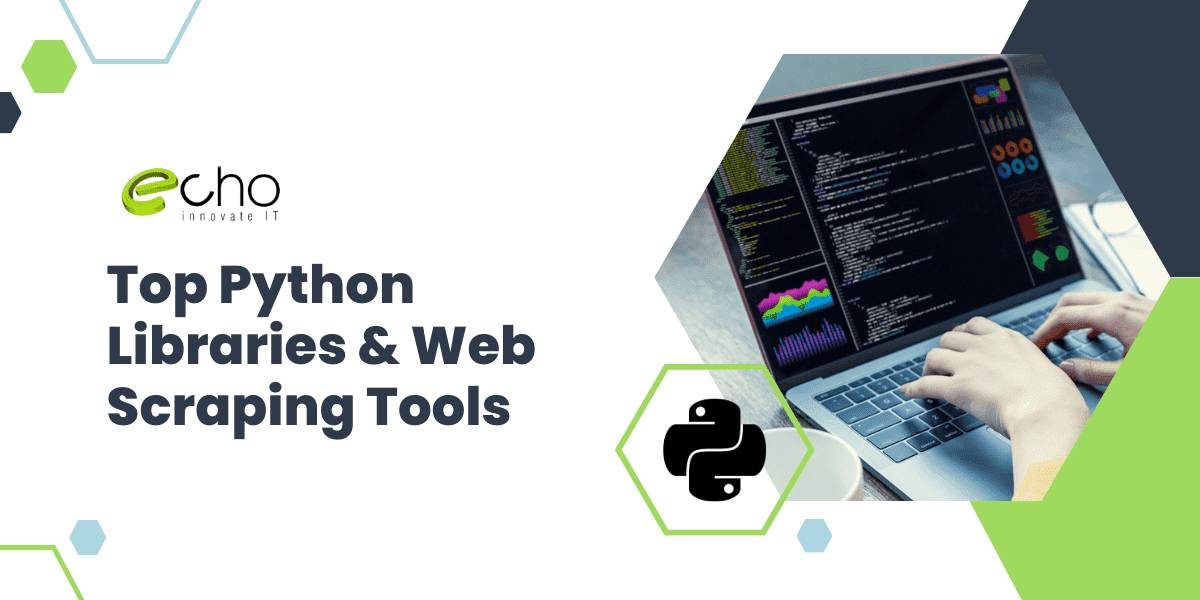
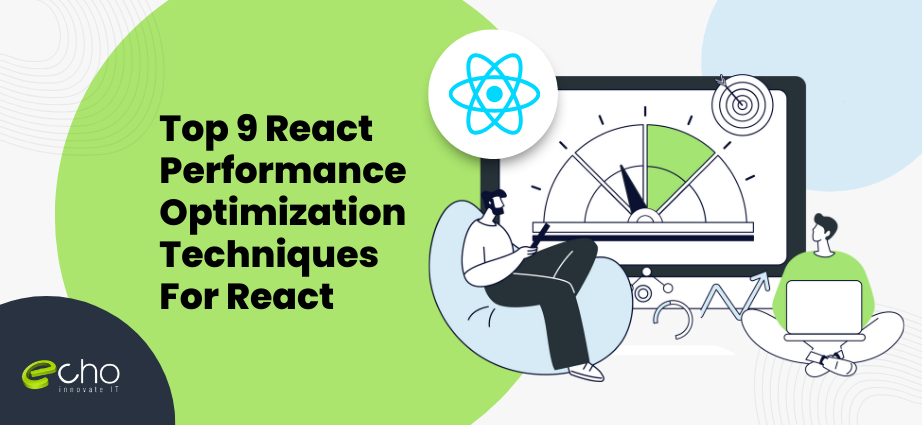
![10 Best Budgeting Apps Like Mint (2024)[35]](https://echoinnovateit.com/wp-content/uploads/2024/04/10-Best-Budgeting-Apps-Like-Mint-202435.png)
